A classic is back!
This article was originally published in RC Driver’s July 2015 issue.
Without a doubt Tamiya has a huge following in the RC world. They’ve helped introduce this hobby to so many people over the years and if you ask any RCer to rattle off a few names of popular Tamiya kits or a list of Tamiya kits they would like to have, the Bruiser or Mountaineer would most likely be on the list. For the longest time, Tamiya fans hoped the aforementioned kits would be re-released and now that wish is has come true with the Toyota Mountain Rider, the re-released version of the original Mountaineer. This is one kit I’ve always wanted in my collection so I jumped at the chance to build, detail and drive it.
AT A GLANCE
WHO MAKES IT: Tamiya
WHO IT’S FOR: Any RC modeler
PART NUMBER: 84386
HOW MUCH: $749.99
BUILD TYPE: Kit
PROS
• A sought-after classic has been revived in all its glory
• Quality cast metal components throughout
• Selectable transmission lets you change from 2WD to 4WD
• Well detailed scale ABS Toyota body
• Easy to lock the diffs for off-roading
• Brings back that old school driving feel
CONS
• The axles are not keyed to the suspension so it is possible for the axle to turn within the U-bolts.
• Unique wheel adapter limits wheel options
REVIEWER’S OPINION
Let’s face it, this is not a cheap model, but for everything you get in this kit, it’s a steal. The quality of the casting and the molding of the body parts is fantastic, the build is fun, the detail is challenging and the drive is memorable each time it hits the trail. Tamiya nailed it with this classic rerelease chassis that many Tamiya fans have been drooling for.
 THOUGHTS
THOUGHTS
Gene Pennington Realism in 1/10 scale!
Christopher Maguire Looks fantastic! The fun for me would be the assembly honestly! Years ago I saw a Bruiser in operation and it seemed stiff and top heavy. Would hope the scale look has scale dampening.
Steve Brendza Beautiful build. Looks like it would be fun to bash around with, get a few ba le scars, beat it up a bit (take before & a er pix). Or just have it as a shelf queen.
Daniel Gallardo It looks amazing. Would make a great truck to go driving into trails imagining it’s me driving.
David Skunk Allen Nice scaler but for the money it costs, its too expensive to be a shelf queen and would need alot of help to be a good trail runner.
FOLLOW US: facebook.com/rcdriver
TOOLS AND ACCESSORIES INCLUDED
• Tamiya grease, hex wrenches, box wrench and multi-tool
ITEMS NEEDED
• 7.2V NiMh pack Charger
• 3 or 4-Channel Radio System with two servos
• Electronic Speed Control
• Paint
ITEMS USED
• Tactic TTX330 Radio, TACM0245-
The TTX300 is a great three-channel radio for just about any RC driver looking for a simple, easy-to-use radio with three-channel capability. This radio has servo reversing, dual rate for the steering and the third channel buttons made shifting the transmission a breeze after a little programming.
LRP AI Runner Reverse V2 ESC, 83020–
This simple plug-in-and-play ESC makes it easy for anyone to swap out a speed control for this efficient brushed unit. The Runner is fitted with a Tamiya battery plug and bullet style motor plugs. It has a heatsink for cooling efficiency and can handle motors over 16 turns.
Tactic TSX45 Servo, TACM0245-
This servo is a great standard size servo for its price. It has metal gears and a high torque output that makes it a great option for many applications such as our Mountain Rider’s steering servo.
ADDITIONAL ITEMS USED
• LRP 3000mAh NiMh battery
• RC Gear/ Duratrax SX101 Servo
FEATURE BREAKDOWN
The chassis is, well, a scaled-down real chassis. Stamped steel frame rails with stamped cross members for support and even scale looking shock mounts. It comes partially assembled when you pull it from the box and when you do place it down on your bench, its something that you’ll spend time on just to check it out before you dive into the build, it’s that impressive. You will, however, have to remove the screws that hold the chassis components together in order to add threadlock to make certain the hardware doesn’t vibrate loose while driving. In the rear of the truck is a large electronics box, reminiscent of the original Mountaineer, so when you go to mount today’s electronics in the box, you’ll find plenty of room to mount your equipment. The battery tray sits mid-ship and still uses two rubber bands to secure the battery. Oh the days of using rubber bands on RC cars… it’s all coming back to me; memories.
The steering servo and shift servo are mounted in that large radio box I was telling you about earlier. The steering servo gets a Tamiya servo saver style horn and long steering rod to connect to the single crank toward the front of the truck. The crank links to one steering knuckle on the axle and a link spans behind the axle to mate up with the other steering knuckle. Because the linkages sit inline with each other, there is no bump steer when the suspension is compressed at any point of the steering throw. Not that the suspension compresses much anyway, the leaf springs are stiff, but more on that later.
Here’s later, the suspension is modeled after a leaf-spring truck suspension, you assemble the 3-leaf springs. The axles’ movements are damped by oil-filled shocks which are unique and rather impressive. The shocks have an aluminum body and are sealed on the bottom. A small Teflon piston sits on the shaft and goes into the shock and is then filled by oil. Once you fill the oil up to a line, you insert a machined metal puck with outer O-ring. Excess oil will bleed out of the puck and then you install a screw to seal it off. Then insert a spring into the body and screw the shock cap in place. When the shock is compressed, the puck floats up and down to adjust for oil displacement. The leaf springs with shackles and the oil-filled shocks make up the suspension, no funky arms or multiple shock angles here, just a fixed suspension setup, just like a real production truck.
The drivetrain is the part of this truck that gives RC enthusiasts the chills. The majority of the 4WD drivline is cast metal or machined steel. Let’s start at the axles. The front and rear axle halves are cast metal with metal gear differentials inside and metal bevel pinion gears and steel shafts extending out through the ends of the cases. The front axle shafts have dogbone ends so the steering knuckles can pivot with the ball bearing supported axle stubs installed. The rear gets straight shaft axles out to the wheels. Tamiya’s wheel hub adapters are pretty unique in that the outer support bearing for the axle is located in the wheel hub. Although it works well and looks neat, it does limit the aftermarket wheel options for the axle sets because the adapter keys and bolts to Tamiya’s unique chrome wheels. But back to the drive, the axles get their power from steel universal driveshafts that connect to the massive, centrally mounted transmission. The heart of the truck, the transmission, is a true work of scale model art. The multiple-piece case is case metal with a slew of gears and shift forks inside. I’m dumbing this down a bit, but basically this is a selectable gear transmission that gives you the ability to drive in 4WD low gear, 2WD medium gear or 2WD high gear via a third channel servo programmed to your radio. I will say building the transmission was challenging, but when it’s done, its operation is all worth it. The transmission has a center differential to help distribute the power and Tamiya includes a 540-size motor to help get you moving.
Details, there are plenty of them throughout the kit. A front skid plate bolts to the front axle to help slide the truck over the rough without beating up the axle case. It also prevents anything from grabbing the steering link. White front and rear bumpers bolt to the frame. The rear bumper bolts to pressed steel frame extensions. A tall metal body mount hoop supports the front of the body. The transmission support pegs sit in rubber grommets to damp transmission movement. Authentic looking U-bolts secure the leaf springs to the axles. Rubber inspection plugs allow you to peek inside the tranny once it’s bolted together and lube the shift channels. Rubber boots on the outside of the shocks give them a realistic look while protecting the shaft and seals. And as you may have picked up, you can easily lock the differentials by removing a set screw from the axle housing, install a pin set screw into the differential and then reinstall the axle set screw plug.
Finally, lets talk flash, the Toyota Mountain Rider body set. This multiple piece set will set you back a few days to paint and detail. You didn’t think this kit would be built in a day, did you? Rome wasn’t either. So you’ll want to pick up your primer and paints while you are at the shop buying this kit and paint while you build to shorten up your time to get this machine running. The Toyota body has awesome lines and detail. The bed and cab are all two-piece and the interior is separate as is the front grill assembly. The chrome roll bar, tinted window glass and mirrors are all bolt-on accessories that make this truck look trick. What also stands out is that all lights are ready for the addition of an aftermarket LED kit. The tube-style rocker guards bolt on to the body and Tamiya supplies decals for all areas of the body, including orange stripes for the side to mimic the box art. But since this is my kit, I detailed it without the extra graphics.
ON THE TRACK
The Mountain Rider is one of those “run it wherever you put it down” trucks and yes, we did run our beautiful test truck in a number of places from the carpeted floors in our office to the rocky hills at some of our select play locations. And wherever I took it to drive, it grabbed a lot of attention. Actually it grabbed attention ten minutes after I left my workshop when I completed the build. The guy at the coffee shop drive-thru saw the truck sitting on my front seat and immediately said, “Dude, that thing is awesome! Where can I get one?” I told him and yes, I was proud of my build riding shotgun on the way to work with me.
So after the pretty detail shots and a few quick trips up and down the hallway at work it was time to play in this truck’s natural habitat, the dirt and rocky terrain of the nearest park. Radio on first, truck second and the truck went backwards when I hit forward throttle. Odd, I had set the LRP speedo with the Tactic radio on my bench and it worked fine. I switched the reversing switch and it was fine. But come to find out, the programming didn’t jive between the two electronic components and I had to reset the reverse every time I turned on the truck. This was a minor detail I was able to get around, so now on to the drive.
With the transmission in two-wheel drive, the truck is quick in a scale fashion, which if you read into this properly means that it’s slow compared to, let’s say, your basic RTR truck on today’s hobby shop shelves. But this truck is not about insane speeds, it’s about looking scale and that it does well. I had locked out just the rear diff, so the truck had plenty of grunt zipping up and down dirt and grass covered hills. The turning radius wasn’t overly tight, but since the trail I was driving on was wide, I didn’t have any turning issues. It was in 4WD where the turning was cut down a little bit more that I noticed I wanted a lot of steering to navigate rocks and stumps.
So after some two-wheel dirt kicking it was time to try the 4WD low option. I pressed the third channel button on the Tactic radio and the transmission shifted easily. It needed to roll just a little bit to engage, but there wasn’t a hiccup. So in 4WD low, the truck is pretty slow, but I was able to get the truck up some steep inclines even with the front diff still open and not locked like the rear. There were, however, plenty of times where a front wheel would diff out in loose dirt going up a hill or one would get hung up on a rock, making traversing an obstacle difficult. If I keep tackling hilly, off-road terrain, I think I’ll be looking for a little more wheel speed to get the truck over the rocks, so a motor swap may be in my truck’s future.
Overall the Mountain Rider has that rigid leaf spring, bouncy, jittery look and feel to it. If you are running this truck because of nostalgia reasons, it will deliver hands down that old authentic Mountaineer driving experience. If you bought this truck not knowing it’s past, you might find its driving characteristic quirky. But as someone who has been driving RC cars since 1985, I love the Tamiya Mountain Rider and the memories it helped me relive. Now for durability, my truck endured our test cycle without issue, but as a seasoned driver, I drove it to keep it on its wheels. My only issue with the truck is the axles not being keyed to the suspension. I did hit a rock that twisted the rear axle up when I backed into it. And I also twisted the axle in the U-bolts when carrying the truck from the axle, so just be aware it might move on you; otherwise the Mountain Rider is fun; enjoy the drive.
for in-depth reviews on the latest RC vehicles
SPECS AND TUNING OPTIONS
DIMENSIONS
LENGTH: 20.52 in. (521mm)
WIDTH: 10.75 in. (273mm)
WHEELBASE: 11.42 in. (290mm)
WEIGHT: 8 lbs.
BODY, WHEELS AND TIRES
BODY: Multi-piece ABS plastic
WHEELS: Chrome 2.2-in. truck type
WHEEL ADAPTER TYPE: 3-screw bolt pattern
TIRES: Off-set chevron style
SUSPENSION
TYPE: Lower leaf with oil shocks
SHOCK POSITIONS: Fixed
CAMBER: Fixed
ROLL: Fixed
WHEELBASE: Fixed
RIDE HEIGHT: Fixed
MISC: Oil damping altered with optional oil
STEERING
TYPE: BTA link with single crank
TOE: Adjustable via main rod
CHASSIS
TYPE: Rail
MATERIAL: Pressed steel
THICKNESS: N/A
DRIVETRAIN
TYPE: Shaft drive
TRANSMISSION: 3-speed gearbox
DIFFERENTIAL: Gear diff with optional lock
GEAR RATIO: Low 1:54.63 (4WD), 2nd 1:40.49 (2WD), Top 27.92 (2WD)
BEARINGS: Metal shield ball bearing
CLUTCH TYPE: N/A
RATING TALLY
Opinion: 9
Performance – Acceleration: 7
Performance – Steering: 7
Performance – Handling: 6
Performance – Durability: 7
Feature Breakdown: 8
Overall Value: 8
WRAP UP
When I posted the build of the Mountain Rider you see here online (rcdriver.com/tamiya- toyota-mountain-rider) I also posted the link to Social Media for people to see what goes into this awesome truck. Some responses, however, were negative about the cost of the kit. The price is high compared to other fun truck kits; however, I like to think of it from the kit’s conception to the point it gets into your hands. It’s probably safe to say nobody can imagine how much the molds cost Tamiya to reproduce this kit. Then there’s the cost of all of the materials used in this kit, plus the additional machine work for many of the metal components, plastic molds and the list goes on. So by the time you add up what’s involved in producing this kit, the price seems like a pretty good deal to get a nostalgic truck that can revive the memories of RC’s past for many and intrigue the minds of future enthusiasts who are passionate about the modeling side of the hobby. Thank you, Tamiya, for your efforts in the Mountain Rider, it’s an excellent truck to experience on many levels.
LINKS
Tactic, distributed exclusively by Great Planes Model Distributors, hobbico.com, (800) 682-8948
Tamiya America Inc., tamiyausa.com, (800) 826-4922
LRP, lrp-americastore.com, (949)276-6060
 RC Driver The Best In RC Car & Truck News, Reviews & Video
RC Driver The Best In RC Car & Truck News, Reviews & Video 


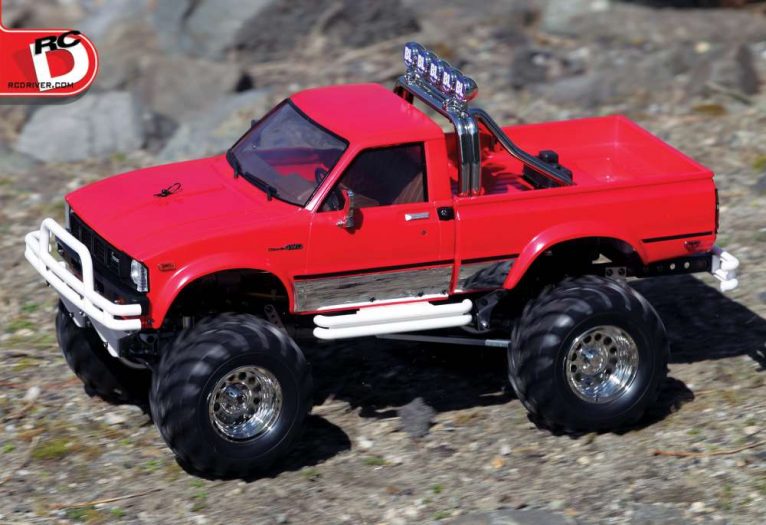
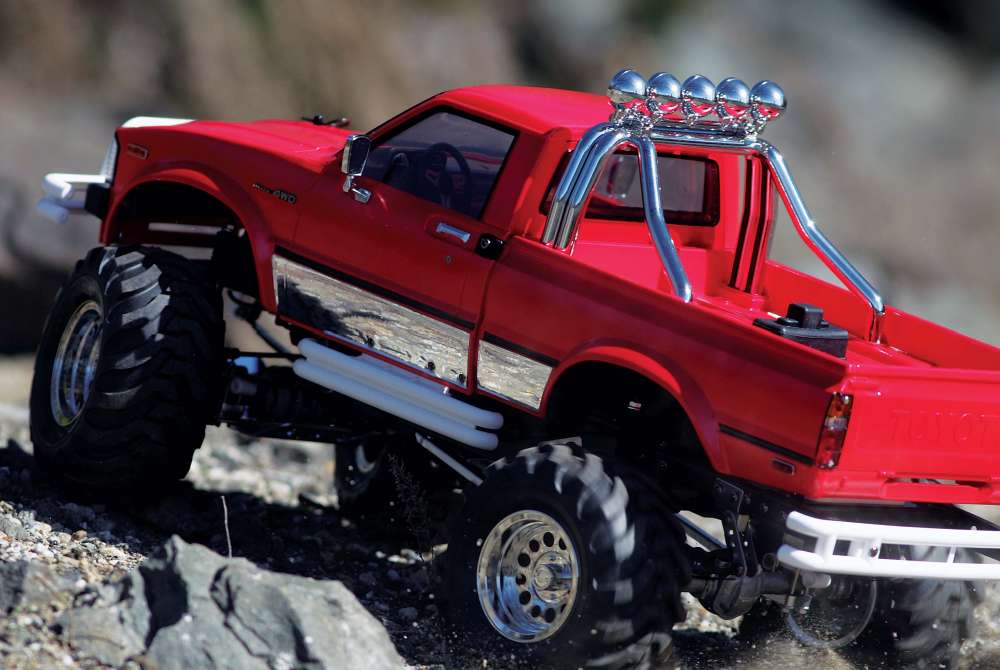
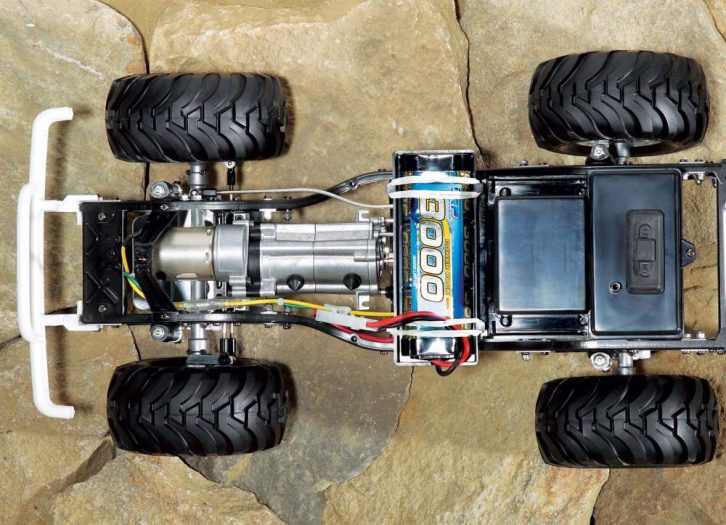
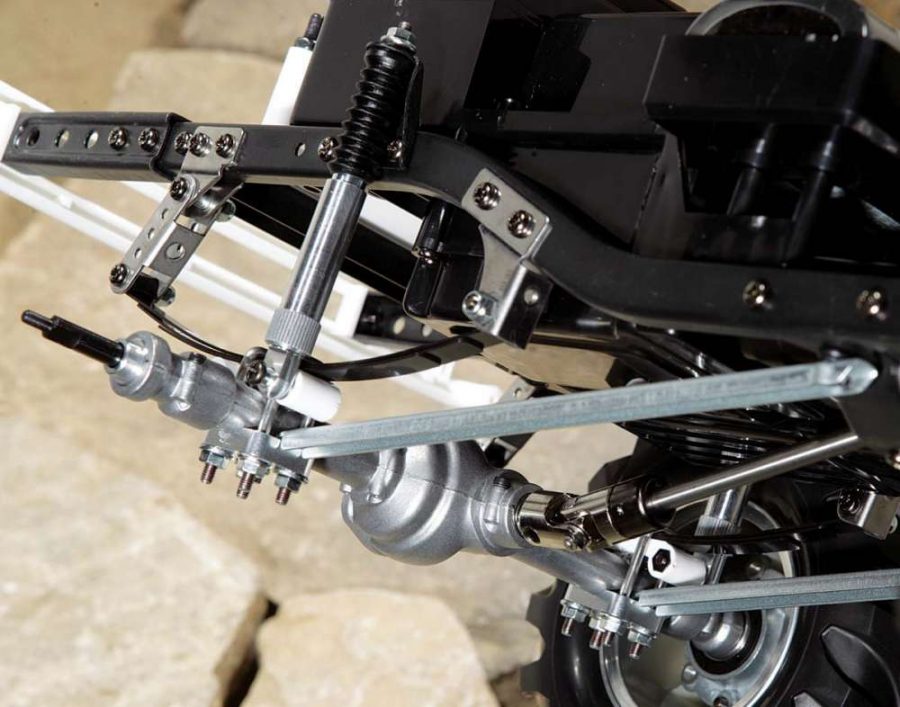
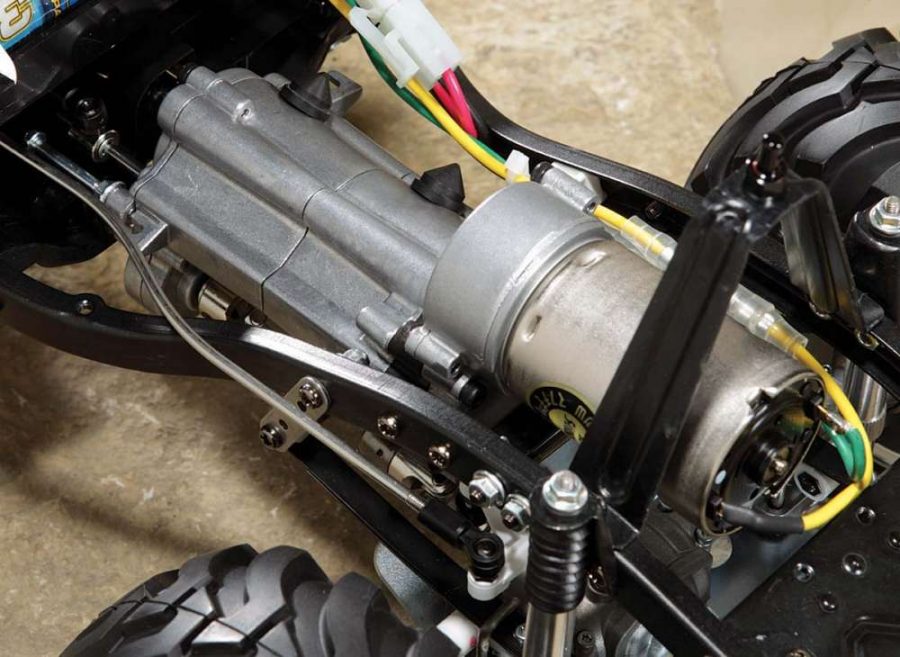
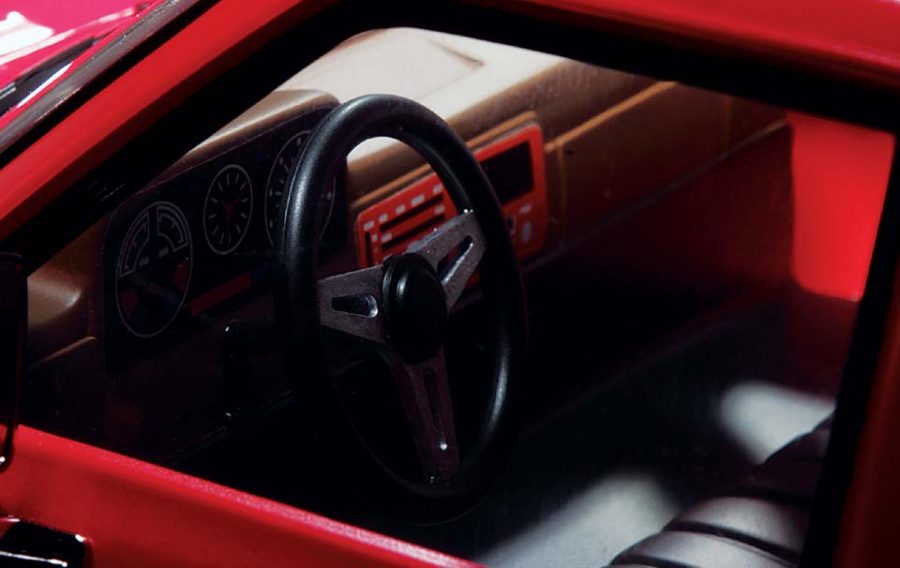
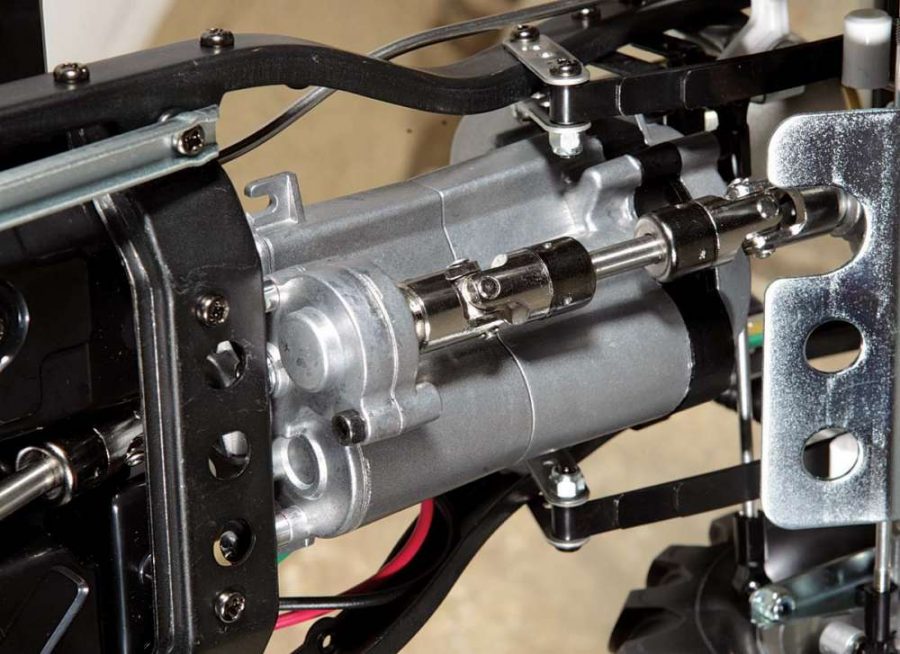
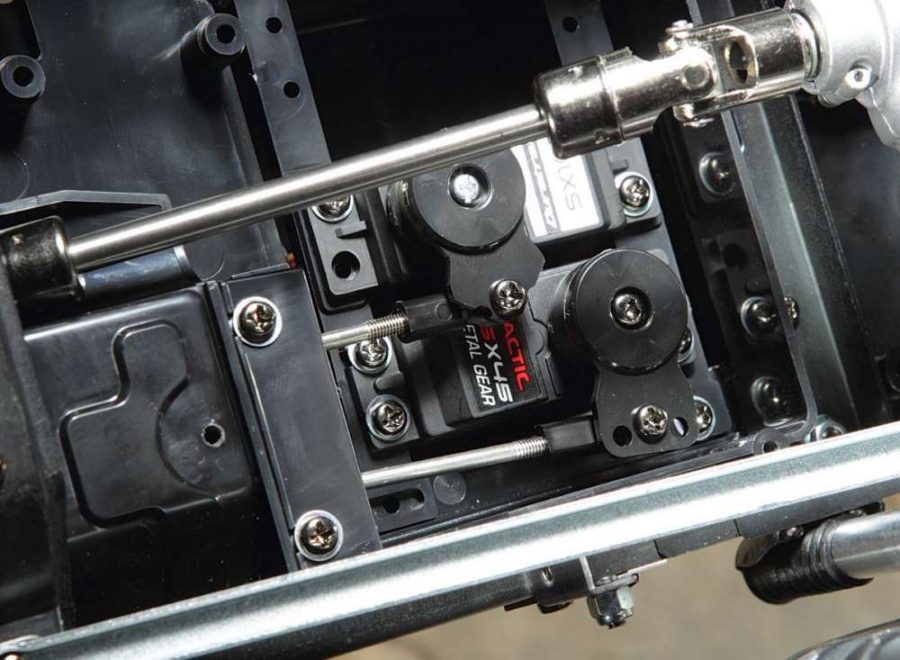






Hey there. I was reading about the Mountain Rider Build. Did you use the Mica Red? Also. did you apply a clear coat over the red? I’m getting ready to paint mine. I t’s been awhile since I built a hard shell plastic body rc.
Your’s seems to look great.